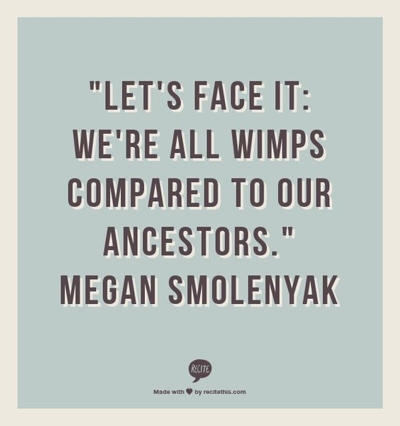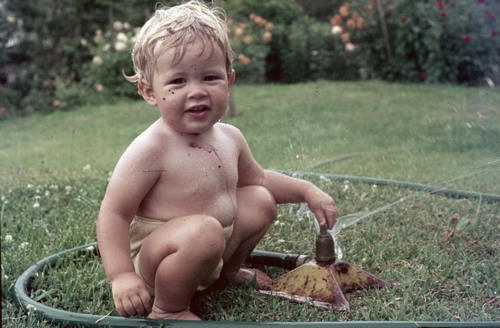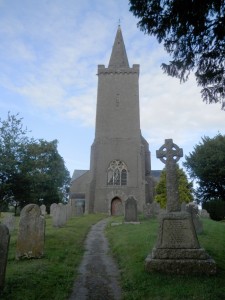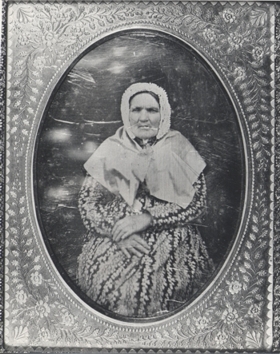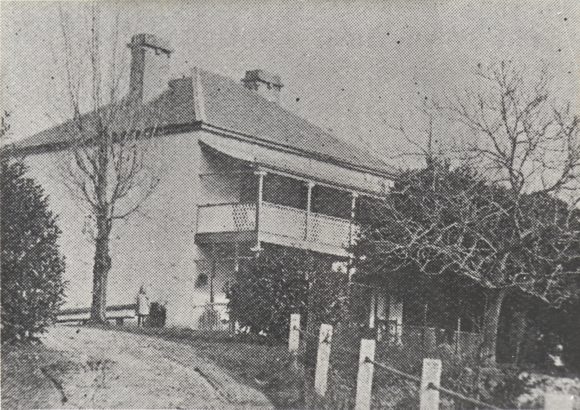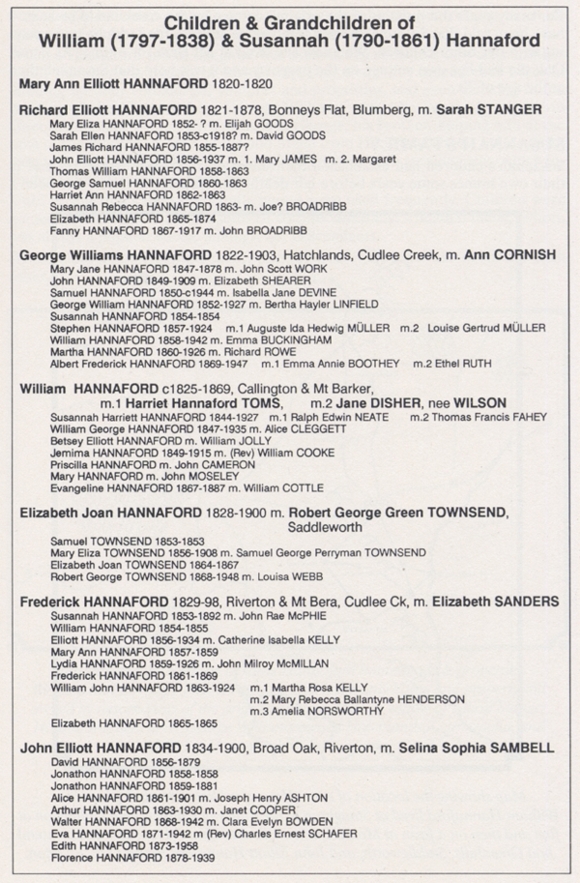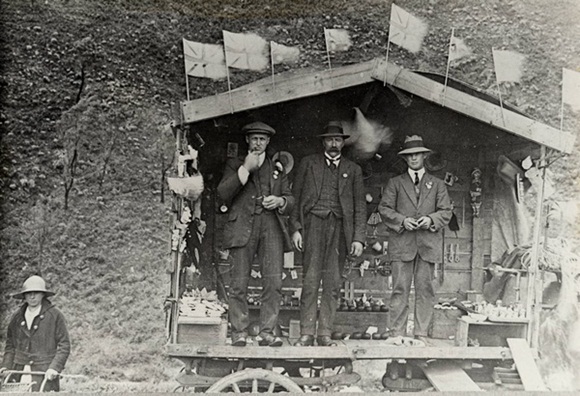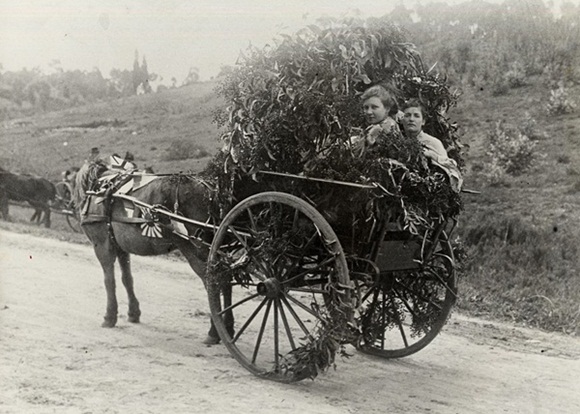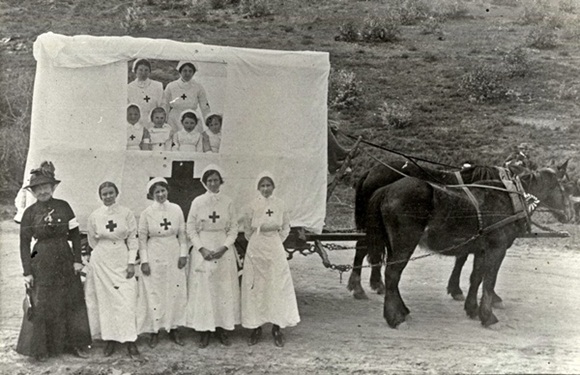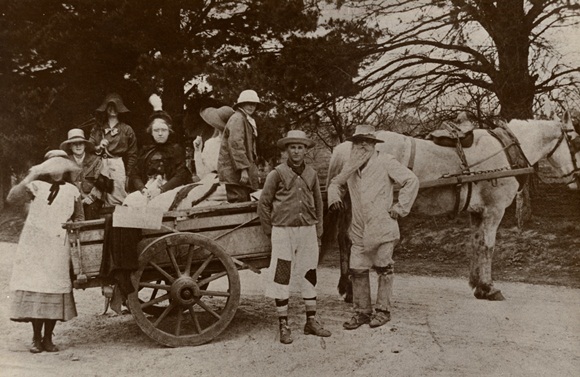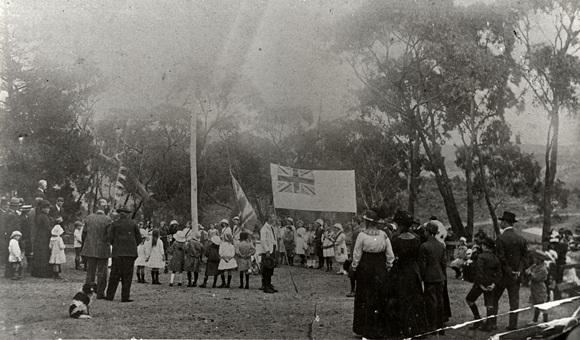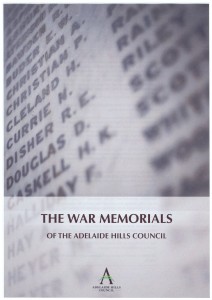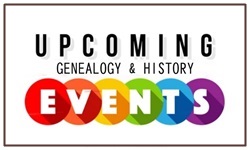Summertime Memories
While the temperature has been near record levels in my little corner of the world (in South Australia), recently, it’s made me, and probably everyone else in the state seriously appreciate our air conditioners. I have no idea how ancestors coped with 40C+ days without air conditioners? Serious kudos to them. They did it tough and they survived, and it reminds me of one of my all-time favourite genealogy quotes …
But also I’ve been thinking about Summertime and what we did when I was young. How many of these can you relate to?
—————
Firstly sprinklers were used to not only water the lawn, but were also a great way to keep kids occupied and cool, as they played in the water. But along with that there was plenty of clover and bees – which of course also resulted in beestings.
There was the slip’n’slide, do you remember that? That was cool, at least until too much dirt grit got on it, then grazed you as you slid down.
There was the little kiddy pool. That was well used, and when my bother and I got older my family got a bigger above ground pool. Summertime as a kid was pretty much spent in the pool!
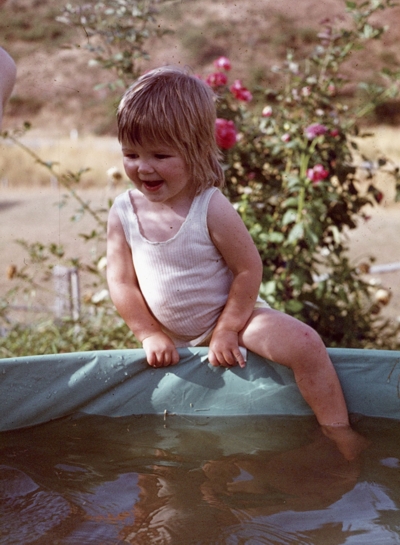
This is little Lonetester hopping into the kiddy pool. Brown water, but when you were used to dam water, this was clean in comparison!
And who remembers the black innertube rubber tyres? They were the best in the pool. There was none of the fancy plastic blow-up ones that are available these days.
Cordial or juice icy poles. You know the ones that were frozen in the tupperware iceblock moulds. If you’ve forgotten when they looked like, you can check them out here.
The days were filled with outdoor life. Bike riding to friends houses, playing in nearby creeks, or getting dropped at a friend or neighbours house for the day, particularly if they had a pool or dam. It was life back then.
Tadpoling. I was lucky enough to have a couple of creeks near my place, so when my friends and I weren’t in the pool or dam, we would go out and and catch tadpoles.
When you went to playgrounds, yes you burned your bum, because the slippery dip (along with every other piece of play equipment) was metal! None of this plastic stuff. But we survived.
On the rare occasion when you weren’t outside on a hot day, you were probably parked in front of the portable (what is now called “retro”) water cooler air conditioner. You know the ones on wheels, that you could wheel into a room, that was heaven on a hot day. Ours looked pretty similar to this one.
So that’s just a few of my Summertime memories. What are yours?
My First Hannaford Family in Australia
For Australia Day this year I decided to write about the Hannafords, who are one of my immigrating families. Or more specifically I should say, about Susannah Hannaford (nee Elliott), who is truly the matriarch of the family, and her children.
I admit I am in awe of Susannah, in some ways anyway. She was a widow by age 48, not an easy thing for anyone, but then to pack up all of your belongings and move to the other side of the world, to a colony that had only been founded a few years before, with her six children, leaving her family, friends and whole life behind, to start again from scratch. I can’t even begin to think of what that would be like or how she managed it. But she survived. So did her children, and now her descendants number the thousands.
But let’s go back a little bit first.
Back in Devon …
Susannah Elliott was born in 1790 in the market town of Totnes, in Devon, England. Meanwhile the Hannaford family (the ones I’m writing about anyway), grew up just four miles away in the little town of Rattery. I mention that as the Hannaford name in Devon is much like Smith or Brown everywhere else. Hannafords are everywhere!
When Susannah was 30 years old, she married William Hannaford (one from the neighbouring parish in Rattery), and who was actually a few years younger than her. Sadly William died at age 42, leaving Susannah with six children ranging in age from 17 down to 6.
Devon at that time (actually probably England at that time) had limited employment opportunities, and with high taxes (land tax and window tax for instance), it would seem that emigrating to a new land offered better prospects than staying in Devon.
The Voyage and Arrival …
So in 1840 Susannah and her clan together with 164 other passengers, boarded the “Brightman”, which was a three-masted barque which sailed from London, to Plymouth, and on to South Australia, making a quick voyage in just 106 days. Again, I can’t envisage what that would have been like. The closest I’ve been to this is a large cruise ship for 21 days which doesn’t even vaguely compare in any way whatsoever!
The Verco’s were also aboard the Brightman, and the following is an extract from the “Early Recollections of Sir Joseph Verco” which was written around 1930.
“The Brightman was a dry and comfortable ship. The bunks were arranged athwart ships along the sides of the vessel leaving a passage down the middle of the ‘tween decks. If in bed the passengers had to shift pillows from one end of the bunk to the other else he would be lying with his head down and his feet at a much higher level. Captain Nockells was a religious man conducting regular Sunday services, and he never failed to close with Psalm 139 verses 7-12. He would then invoke the blessing of God on the ship and those within, followed by the benediction. The Brightman made good passage of only 106 days. Keeping as much to the eastward as possible on the way south to avoid the dreaded Cap San Roque and its leeward currents. They sailed close round the Cape of Good Hope, then well to the north … and anchored in Holdfast Bay on 10 December 1840.
From the time of anchoring to the time of departure from the ship, there was a delay of seven days for some passengers. Boats transported the passengers and their luggage to land. Many floatable articles, such as wooden framed houses, manufactured and packed in England for immediate erection on landing in Australia, were simply tossed overboard and then tided to shire. All this took time and meant a long and tedious wait onboard for passengers.
When not concerned with the activity going on around them, those onboard found themselves preoccupied with thoughts of what awaited them beyond the shores amid the dense forest of trees and scrub … As it was they could see hundreds of natives moving along the shoreline. More than once they had been startled by the noise of a corroboree, one of which had been followed by fierce fighting resulting in many naked warriors being speared to death. Even at a distance it was somewhat frightening, but still more unnerving had been the screaming and yelling of the lubras as they mourned their dead.”
From the ship at Holdfast Bay (now Glenelg) it was a case of making the trip to Emigration Square in Adelaide, approximately 12 kilometers away, and with no roads. For many it was a case of walking the trip while for others they travelled by bullock dray. Emigration Square, situated on the Parklands, just west of Hindley Street contained 30-40 wooden huts in 1839-40, which were made for newly arrived emigrants to have a place to stay until they moved on.
Settling in South Australia …
The records show that the first house Susannah bought in South Australia was a 2 acre property at Unley in 1841. This was a small cottage and she established a mini farm on the land. By this time her two oldest two sons, Richard and George, went off cattle herding for the South Australian Company. And no doubt it was during one their travels that they heard of “fertile land with springs and running water 25 miles from Adelaide”. So George and his friend from the ship, James Verco, set out to find this land, and found it at Cudlee Creek, in the Adelaide Hills.
George was impressed with it, so much so that Susannah immediately bought land there, and in 1849 had a cottage built from stone quarried on the property. They named this property “Hatchlands” after the family property in Devon “Hatchland”. And this was the start of the Hannaford’s at Cudlee Creek. And today (six generations and 168 years later), they are still in the region.
As her family grew up and got their own properties, you will find descendants of Susannah’s living at Bonney’s Flat, Birdwood (Blumberg), Riverton, Saddleworth and of course Cudlee Creek (all in South Australia). And some of the property names associated with the family are ‘Broad Oak’, ‘Mount Bera’, ‘Riverside’, ‘Dingo Vale’, ‘Wattle Vale’, ‘The Briars’ and ‘Greenhills’.
The Hannaford’s have been heavily involved in the Fruitgrowers and Agricultural Associations for many years, and were known for their top class and prize winning apples. Some even winning international prizes. And I’m proud to say that today there are still family members running these generations-old apple orchards.
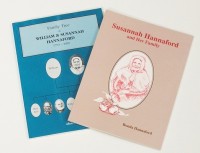 Of course Susannah and her family’s story doesn’t stop there. There are many achievements and noteworthy things from numerous descendants, but it’s too much for this post. But for anyone that does want more info on the family, I suggest getting a copy of both the following books, as they contain plenty of detail:
Of course Susannah and her family’s story doesn’t stop there. There are many achievements and noteworthy things from numerous descendants, but it’s too much for this post. But for anyone that does want more info on the family, I suggest getting a copy of both the following books, as they contain plenty of detail:
– Susannah Hannaford and her Family
– The Family Tree of William and Susannah Hannaford 1790-1990
This chart below shows Susannah and William Hannaford, their seven children (the first one died in infancy), together with their grandchildren. Seeing this you’ll understand WHY there are so many Hannaford’s around now.
Susannah Hannaford (1790-1861)
Truly a pioneer
And the matriarch of an incredible clan
Australia Day in the Gumeracha District in the Early 1900s
Australia Day as we know it, is a day to have off work, and spend time with family and friends, often having a picnic or barbecue – just having a lazy day. But it wasn’t always like this. In fact it wasn’t even a public holiday in all states until 1994.
To quote from the Australia Day website …
The tradition of having Australia Day as a national holiday on 26 January is a recent one. Not until 1935 did all the Australian states and territories use that name to mark that date. Not until 1994 did they begin to celebrate Australia Day consistently as a public holiday on that date.
So we find that in 1915 Australia Day was in fact held July 30th. Why that particular day I don’t know, but it was, and it was used not only to have a celebration, but also commemorate those who went to war, and used as a means for fundraising for the war.
The article from South Australia’s ‘Register’ newspaper, dated 2 August 1915 describes what the Gumeracha district (which covers the town of Gumeracaha, as well as the neighbouring towns of Forreston, Kenton Valley and Cudlee Creek) did on this day.
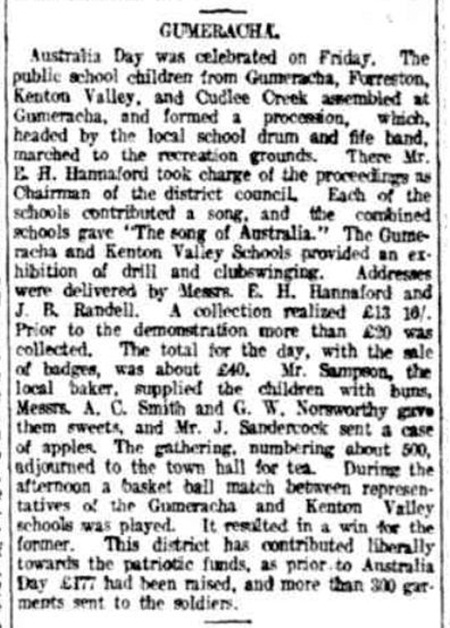
Australia Day at Gumeracha, The Register, 2 August 1915, p. 10. http://nla.gov.au/nla.news-article59422226
Again, we have to thank Trove newspapers for being there when we need it, and for providing information that we otherwise wouldn’t have found.
The photographs below are from a collection held by local historian, Alan Phillips. Grouped together in a box titled “Cudlee Creek”, it is believed that the following photographs are taken on Australia Day 1915 (or around then). Sadly not all are captioned, but those that are, have the captions noted below.
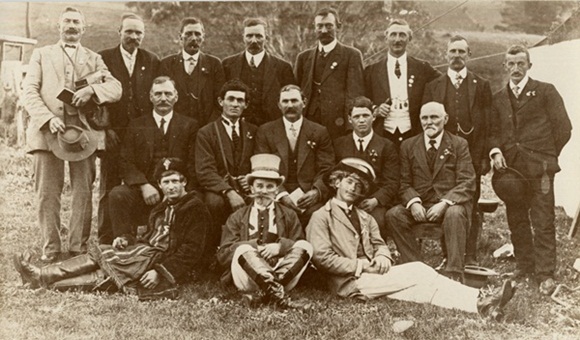
Australia Day, Cudlee Creek, c.1915
Back L-R: Arthur? Roepke, E.G. Ludewigs, Fred Tippett, Ted Pool, Bill Schlein, Fred Schultz, Stephen Redden, Ted Lambert
Middle L-R: Fred Langley, Bill Hille, Ern Hanaford, Bill Menz, Elliott Hannaford
Front L-R: Arthur Nagle, Ted Gallas, Le Lambert
“War Memorials of the Adelaide Hills” Book
The Adelaide Hills Council was fortunate to obtain a grant through the South Australian Government’s “Anzac Day Commemoration Fund“. For this they nominated that the funds would be used towards “research and preservation of Honour Board Memorials of Adelaide Hills”, and to “engage with schools and local groups to locate and research honour boards for inclusion in the publication War Memorials of the Adelaide Hills”.
To commemorate Anzac 2015, a publication “War Memorials of the Adelaide Hills” was produced which details information about the war memorials throughout the Adelaide Hills in the towns covered by the Council, giving town name with details of the monuments.
A second edition of “War Memorials of the Adelaide Hills”, that will also include additional material and corrections that have been made by the community will also be produced, and released in due course.
The Council also have a separate project to research, photograph and record details on all the honour boards in the Council area. While the majority of the honour boards can be found in local RSLs, community halls and schools, others have found their way to more obscure locations. The lack of detail of honour boards made it difficult to provide a comprehensive account of the memorials within the Council area. The aim is for this one to be released as a book as well.
The Adelaide Hills Council covers a large area in the Hills region, and includes the towns: Aldgate, Aldgate Valley, Ashton, Balhannah, Basket Range, Birdwood, Bradbury, Bridgewater, Carey Gully, Castambul, Chain of Ponds, Charleston, Cherryville, Crafers, Crafers West, Cudlee Creek, Dorset Vale, Eagle on the Hill, Forest Range, Forreston, Greenhill, Gumeracha, Heathfield, Houghton, Humbug Scrub, Inglewood, Inverbrackie, Ironbank, Kenton Valley, Kersbrook, Lenswood, Lobethal, Longwood, Lower Hermitage, Marble Hill, Millbrook, Montacute, Mount George, Mount Lofty, Mount Torrens, Mylor, Norton Summit, Oakbank, Paracombe, Piccadilly, Rostrevor, Scott Creek, Stirling, Summertown, Teringie, Upper Hermitage, Upper Sturt, Uraidla, Verdun, Woodforde, and Woodside.
Can you help?
The Adelaide Hills Council believe that honour boards are another link in conserving our heritage and in the recognition of the sacrifice made by young men and women at times of war, and they are after your help. If you know the whereabouts of any honour boards within the district please let them know.
Contact Details
project convenor: Helen Smith
phone: (08) 8408 0400
email: mail@ahc.sa.gov.au
web: www.ahc.sa.gov.au

